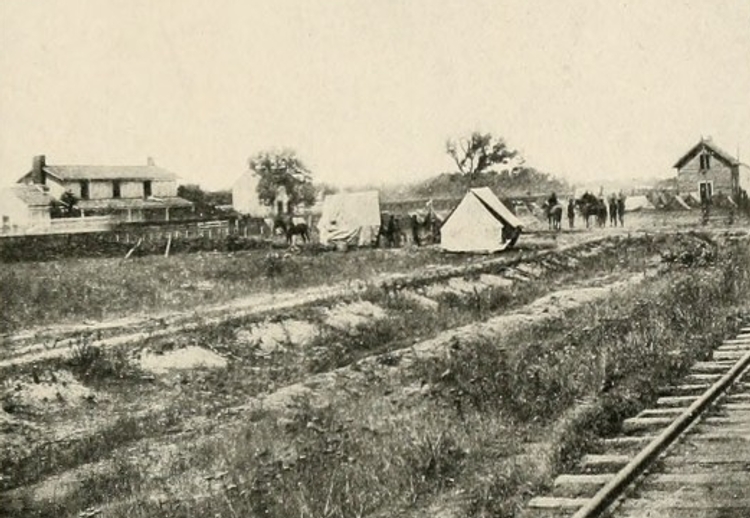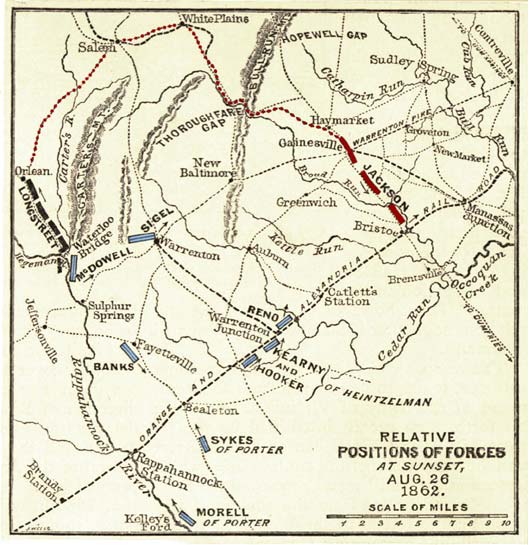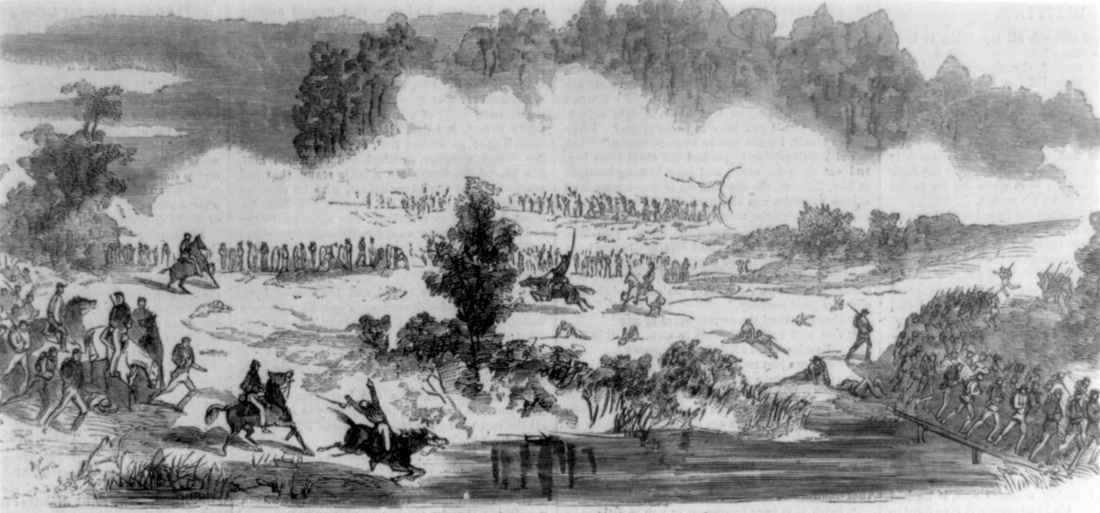The First Battle of Rappahannock Station - August 19-26, 1862

Union pickets at Rappahannock Station, Virginia photographed here in August 1862 will be driven away by Confederates under James L. Longstreet and J.E.B. Stuart in the First Battle of Rappahannock Station.
File from The Photographic History of The Civil War in Ten Volumes: Volume Four, The Cavalry. The Review of Reviews Co., New York. 1911. p. 198
The First Battle of Rappahannock Station, also known as Waterloo Bridge, White Sulphur Springs, Lee Springs, or Freeman's Ford, took place from August 22 to August 25, 1862, in Culpeper County and Fauquier County, Virginia. Early August, Lee determined that McClellan’s army was being withdrawn from the Peninsula to reinforce John Pope. He sent Longstreet from Richmond to join Jackson’s wing of the army near Gordonsville and arrived to take command himself on August 15. August 20-21, Pope withdrew to the line of the Rappahannock River. (Description from the National Park Service).
Army of Virginia- Major General John Pope
Third Corps-Major General Irvin McDowell
Second Division- Brigadier General James B. Ricketts
Second Brigade- Brigadier General Zealous B. Tower
26th New York Infantry Regiment -Colonel William H. Christian
94th New York Infantry Regiment - Colonel Adrian R. Root
88th Pennsylvania Infantry Regiment - Colonel George P. McLean
Lt. Colonel Joseph McLean
90th Pennsylvania Infantry Regiment - Colonel Peter Lyle
Third Corps-Major General Irvin McDowell
Second Division- Brigadier General James B. Ricketts
Second Brigade- Brigadier General Zealous B. Tower
26th New York Infantry Regiment -Colonel William H. Christian
94th New York Infantry Regiment - Colonel Adrian R. Root
88th Pennsylvania Infantry Regiment - Colonel George P. McLean
Lt. Colonel Joseph McLean
90th Pennsylvania Infantry Regiment - Colonel Peter Lyle
August 18, 1862— Lieutenant Harry Hudson of Company C, became the regiment’s
first officer casualty. Hudson was mortally injured as the 88th demolished the Orange & Alexandria Railroad bridge located just north of Mitchell’s Station, which spans Cedar Run Creek. Hudson survived the fall to the creek bed only to be hit by falling debris.
Struck in the head, he remained unconscious and died the following day. He was a
popular officer with enlisted and officers alike.
first officer casualty. Hudson was mortally injured as the 88th demolished the Orange & Alexandria Railroad bridge located just north of Mitchell’s Station, which spans Cedar Run Creek. Hudson survived the fall to the creek bed only to be hit by falling debris.
Struck in the head, he remained unconscious and died the following day. He was a
popular officer with enlisted and officers alike.
August 19, 1862—The Army of Virginia retired to the northern (Warrenton) side of the Rappahannonck River. Abandoned boxes of Confederate hardtack are quickly consumed by the hungry soldiers of Ricketts’ Division. Assigned to cover the withdraw, the 88th forms a line of battle on the southern most corner of the Cedar Mountain battlefield in anticipation of a Confederate pursuit movement across Raccoon Ford. No Confederates were seen advancing up the Raccoon Ford Road, and the 88th marched northeast, paralleling the Orange and Alexandria Railroad, along the Rapidan Road (present day Route 615 and Route 522). Reaching the Germanna Road, the 88th turn northward passing through Culpepper and Brandy Station and following a “severe march” the 88th reaches camp near Rappahannock Station after nightfall.
On August 20th the Union and Confederate forces exchanged artillery fire throughout the day, The 88th was assigned to support Hall's 2nd Maine Artillery Battery and on August 21st the regiment was subjected to substained direct artillery fire. On August 23, J.E.B. Stuart's cavalry made a daring raid on Pope's headquarters at Catlett Station, showing that the Union right flank was vulnerable to a turning movement. Over the next several days, August 22 – 25, the two armies fought a series of minor actions along the Rappahannock River, including Waterloo Bridge, Lee Springs, Freeman's Ford, and Sulphur Springs, resulting in
a few hundred casualties, including seven members of the 88th.
The results of the battle were inconslusive.
a few hundred casualties, including seven members of the 88th.
The results of the battle were inconslusive.


